UPDATED December 2025
Our ultimate guide to Sons of the American Revolution records will help you learn how to use these records in any type of history search.
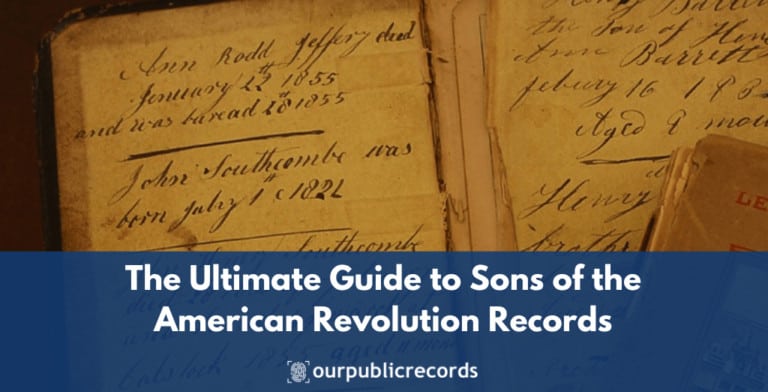
Trying to trace your family history without any help can feel as if you keep slapping yourself in the face. While some people have detailed records that show their ancestors came over on the Mayflower and other passenger ships, not everyone is as lucky. The prejudice that some faced when they moved to the United States from other countries led to them changing their names and claiming a different heritage. You might learn that your ancestors adopted a culture as a way to blend in once they arrived. At OurPublicRecords, you can easily find and access online public records that can help with your search.
We make it easy to find the exact records that you need. Whether you want to look for criminal records before hiring someone to help around the house or you have an interest in historic records that help you design a family tree, we’ll point you in the right direction. Our ultimate guide to Sons of the American Revolution records is a good place to start. You’ll learn what this organization does and how it accepts new members as well as how the organization gathered those records and what they reveal about members and their ancestors.

The Sons of the American Revolution organization remains committed to the preservation of records detailing those who fought for the United States.
What are Sons of the American Revolution Records?
Before we go into the Sons of the American Revolution records and what they are, let’s take a look at the organization itself. Also known as the National Society for the Sons of the American Revolution, it goes by the abbreviations of SAR and NSSAR. The first branch of the organization opened in 1876 in New York after a group of descendants from those who fought in the Revolutionary War came together to talk about their shared heritage. Known as the Sons of the Revolution or SR, it hoped to mimic the Society of Cincinnati that opened a few years earlier in Ohio.
John Austin Stevens founded this branch with the idea that the New York organization would remain superior to all other branches. William Osborn McDowell opened a second branch in New Jersey that he called the New Jersey Society of the Sons of the Revolution. McDowell believed that all chapters and branches should be equal to each other, which was in direct opposition to Stevens. The New Jersey chapter opened on the first anniversary of the inauguration of George Washington. Not only did McDowell receive the first membership card that the organization offered, but he helped launch the Daughters of the American Revolution to help women.
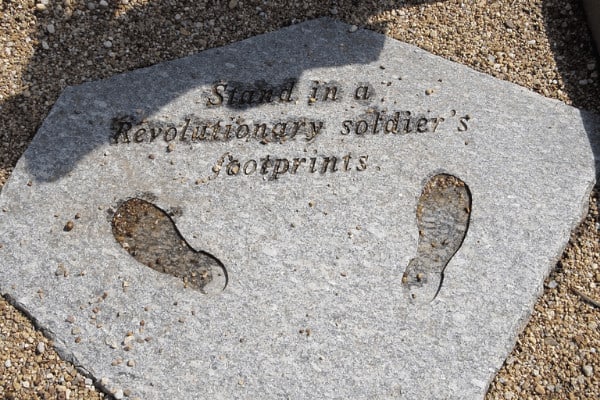
Using SAR records can help you stand in the footprints of your ancestors and see what they went through.
A third organization opened in San Francisco around the same time called the Sons of Revolutionary Ware Sires or SRWS. This organization focused on both those who fought in the war as well as those who supported the war efforts, including women who volunteered to work as nurses and men who brought supplies to the front lines. After SAR opened, it allowed members of the California organization to join. Congress gave SAR a charter in 1906 that made it an official organization. President Theodore Roosevelt both joined the organization and signed its official charter.
How Does the Daughters of the American Revolution Differ?
Though similar to SAR, the Daughters of the American Revolution (DAR) only accepts women who can show that they have familial connections to someone who fought in the war. Founded in 1890, one of the organization’s first members was a direct descendant of President George Washington. Caroline Lavina Scott Harrison was the First Lady and married to President Benjamin Harrison. She served as the organization’s first president and brought public attention to it. DAR often works on projects in which they raise money to preserve Revolutionary War monuments and landmarks as well as honor those who served. It now accepts the descendants of those involved in different events relating to the war such as the Boston Tea Party.

Two American Presidents, Theodore Roosevelt and Benjamin Harrison, gave legitimacy to the SAR and DAR.
Can You Become a Member of SAR?
To become a member of SAR, you must be a male and have good character. The organization requires that you show proof or evidence that your family line includes someone who fought in the Revolutionary War. It accepts descendants of veterans who served in different branches or units, including the:
- State militia
- State navy
- Continental Navy
- Continental Army
You can also join SAR if an ancestor did different things such as:
- Signed the Declaration of Independence
- Served in the Continental Congress
- Provided supplies or support to soldiers
- Served in the army/navy/militia of another country that provided support to the Americans
- Anyone who publicly supported the war effort
It generally takes four steps to join SAR. The first step asks that you make sure that you’re eligible. SAR maintains an extensive list of people it will accept and lets you see if your ancestors qualify you for membership. You will then need to contact a local chapter to state that you want to join. A representative from that chapter will help you understand the evidence or proof that you need. Once you have that data, you can start your application. SAR allows you to apply online after you set up an account.
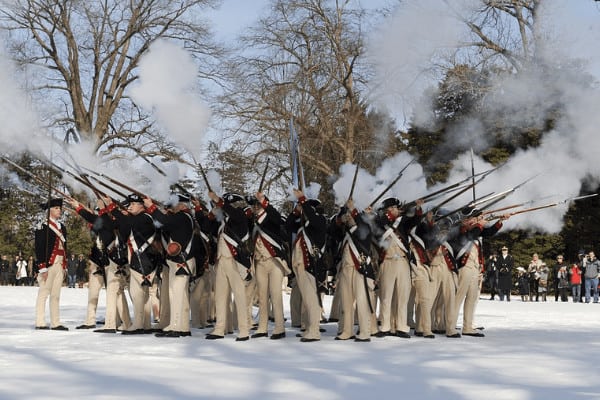
Many people who take part in Revolutionary War reenactments traced their lineage through the Sons of the American Revolution.
SAR Records
The SAR maintains a large database of soldiers who fought in the Revolutionary War. You can search online and view some of those records through your computer, but you can also view those records in the National Family Library. SAR has a long list that shows every person who served as an officer during the war as well as biographies of each person. Many records include the individual’s name and father and grandfather too. As SAR records are similar to census records, you can usually find biographical data that helps you verify data that you found from other sources.
Why Sons of the American Revolution Records Matter
Sons of the American Revolution records are important because they are often the only place where you’ll find some information. The United States was not yet a country and didn’t keep detailed records. While you might have a family Bible or find letters that an ancestor wrote, most people have no records of their families from this period. There is a good chance that you don’t know about ancestors who served because they didn’t pass their stories down to the next generation. SAR offers many types of records that you can access online or in person. We’ll take a look at some of those records to give you an idea of which ones are the most important.
Membership Lists
One way you might find your ancestors is through the SAR membership lists. Each list contains the names and addresses of every person who joined in a specific year. If your dad wasn’t a member but you find your grandfather’s name on an older membership list, it’s proof that you had ancestors connected to the war. The membership lists date back to the original founding of the organization too. This allows you to search by the last name of your mother or father to find every family member who joined the organization, even if no one in your family is a current member.

Handwritten letters and documents are just some of the records held in the SAR archives.
Biographies
Learning that someone in your family brought food to men on the battlefield or served in a battle is exciting, but it can also leave you confused because you don’t know what to do with that information. One of the best places to find out what happened to that individual after the war is through the SAR biographies. The organization has a list of every person who served as an officer during the Revolutionary War along with a bio of that person. In mere minutes, you can see if your ancestor stayed in the military and what happened to him after the war.
Correspondence
Though not as many people could read and write during the 18th century as they can today, we do have correspondence and letters that soldiers wrote during battles. Both the national chapter and state chapters of SAR have letters that you can view. You might find a letter that an ancestor wrote to his wife and children at home to detail what he went through. The correspondence also includes official letters and documents that show what suppliers did during the war. This lets you see if a family member brought supplies to help Americans fight the British.
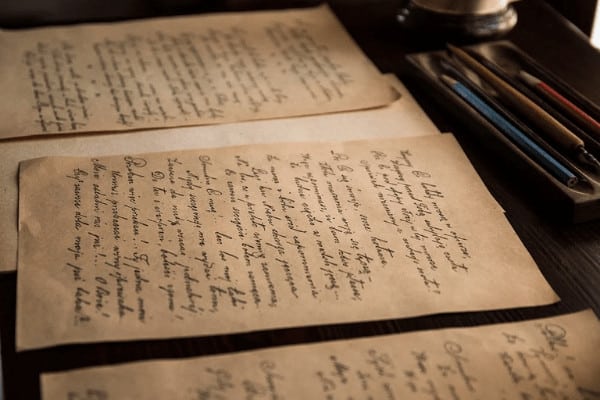
The SAR records may include letters written by one of your ancestors.
Films
Some of the records held by the SAR branches include films. Though you won’t find films of the war itself as video cameras didn’t exist, some films date back to the early 20th century. If you had a grandfather who was a member, you might see him in a reenactment where he played the role of his ancestor. The films also include those shot during national and state meetings. You can see all the members who participated in the meeting and what they did. Some chapters have films that document news reports about the organization and its members too.
Photos
You’ll also find that SAR chapters may have photo records too. Let’s say that your great-grandfather joined the organization as a young man and participated in reenactments and other special events. There is a good chance that you’ll find images of him in his prime through this organization. Some of the photos document historic documents that the organization does not want to let the public touch too. The oils in your skin can significantly damage that old paper. Those records often include membership lists and special letters.

The SAR archive contains many photos and videos of reenactments and other events that the organization held over the years.
How Sons of the American Revolution Records are Compiled
SAR depends heavily on its members for its records. When founded in the 19th century, the war was only a century old, which gave the organization time to gather documents. Some of the early members were so proud of their heritage and familial lines that they willingly gave the SAR the only copies of their records that they had. This included letters that loved ones wrote to those back home as well as service records and official documents that their grandfathers had. As a member who joins today, you can still view those records when you search the SAR archive.
The organization also compiles its records from new members who join in the present day. Let’s say that you renovated an old family home and found medals that an ancestor won in the Spanish-American War or a letter that talks about your ancestor being on hand during the Boston Tea Party. When you apply to the SAR, it will ask for your evidence and make copies of it that will then go in the archives. Anyone who searches for that last name in the future can view those records. This can also help you find distant relatives in the archive.
SAR also compiles records from other sources such as a local news station. That station might donate old videos shot during a reenactment or an interview with former members. Though many of its early videos and films come from members, it has videos shot by others too. You may find some records through the SAR that came from the DAR. This is common if a woman joined the DAR and had male relatives who later applied to or joined the SAR. You can petition the DAR and submit a formal request to view records that it doesn’t share with the SAR too.
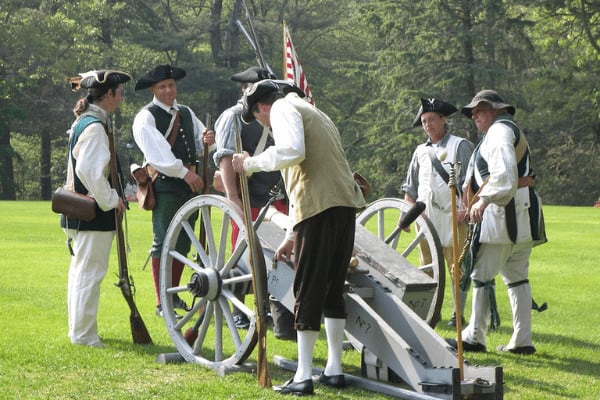
The SAR often accepts videos and photos of modern reenactments if it has members involved in the project.
Where to Find Sons of the American Revolution Records
Thanks to genealogical research websites, it’s easy to find records dating back to the Revolutionary War. As long as you know the name of the person you want to research, you can enter it and quickly find records that show the militia or branch joined and the dates of the individual’s service. Finding official records isn’t as easy because the SAR limits access to those records to its members. All of the following records are available through the SAR.
Patriot Research System
Also known as the PRS, the Patriot Research System is an online tool designed by the Sons of the American Revolution. This online database contains information from three different areas, including the SAR Revolutionary War Graves Registry and the SAR Patriot Record Index. It includes a form that allows users to submit new information that they find. You can only use this system if you are a current member of the SAR or you applied and are waiting for a response to your application. SAR typically does not allow access to its archive unless you have a connection to the organization.
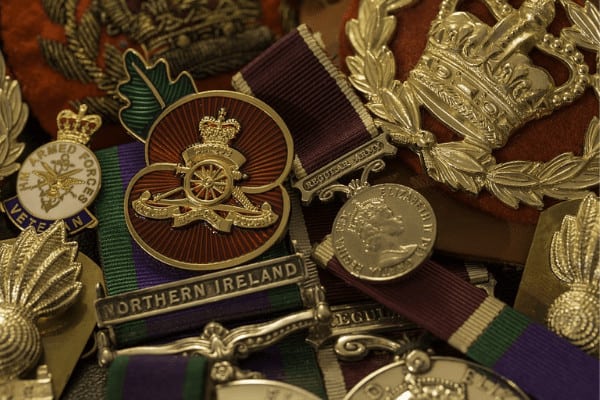
SAR records include details about the awards that soldiers received for their efforts along with other information.
Online Record Copy System
As a SAR member, you can also use the organization’s online record copy system. This allows you to make copies of official documents that you can save for your records. You need to visit the SAR website and choose the record copy section. It will direct you to a page that shows you the cost of this service and how you can pay. SAR accepts credit cards and debit cards but will ask for your membership number when you check out. It costs $10 for a digital or electronic copy and $15 for a paper copy that the organization will mail to you.
Ancestor Search
Thanks to the ancestor search offered by the SAR, you don’t need to spend hours searching through genealogical websites to find information about your ancestors. You can pay $15 for a physical copy that arrives via fax or through the mail or pay $10 for an electronic copy. This will include the names and information of anyone who is or was a full member, including the date they joined and any verified ancestors they had. You can also use this search as a way to find out if a member has any living children. If the SAR determines that the member has no direct descendants, it will send an application that allows you to join.

Online records searches make it easy to find your Revolutionary War ancestors.
Document Search
With the SAR document search, you can get copies of the records that a member used to join. This service charges you a fee of $.50 per page and requires that you pay for a minimum of 10 pages. If you worry about the total cost, you can send an email and find out how long the record is before you submit an official request. It will not include information about current members because it does not want to violate their privacy. You’ll also find that some older documents are no longer available.
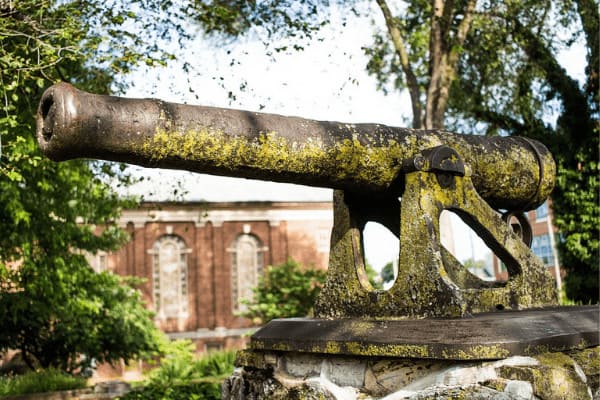
These records might encourage you to visit some of the battlefields where your ancestors fought.
Sons of The American Revolution Records and What They Reveal
The data and information that you’ll find in SAR records are similar to what you would find in other types of public records. It often depends on the records that you use though. Membership records focus more on the member and not his family, but military records from the war allow you to view information about your ancestors who served or help.
Medals Received
When you learn that your grandfather received a Purple Heart in World War II, you likely feel a sense of pride in him. Those who served in the Revolutionary War and other early battles often received medals and awards in recognition of their service too. The Sons of the American Revolution is one of the only organizations with detailed records that list the medals that men received. It contains information about those who fought in the Spanish-American War as well as some of the early battles that led up to the Revolutionary War.
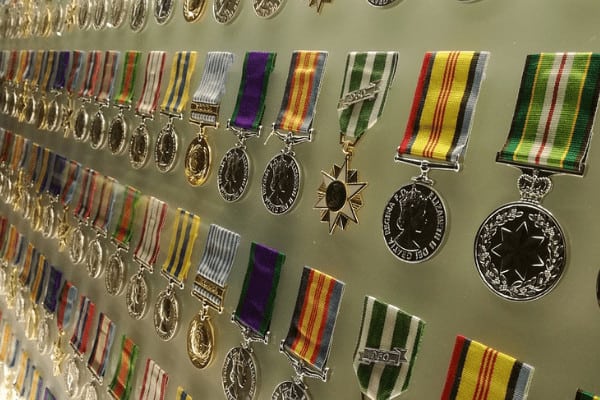
The SAR can help you find and identify any military medals that your ancestors earned.
Member Data
The most important information available from SAR records include data about members. When you join the SAR, the organization will make copies of all the documents and research that you share for its records. It did the same thing in the past. If anyone in your family was a member, you can see his full name and the dates that he was a member. While some people stop attending meetings, they remain a member until they pass away. The organization will make a note of the individual’s passing that appears in the records. You can also see the place where they joined regarding the chapter. This lets you make sure that you found your family member and not a man with a similar name.
Ancestors
With SAR records, you can also easily trace your ancestors and view the connections that they had to the Revolutionary War. If you had a relative who joined the organization, you can search his name and view his bio. It will list all of his ancestors who served. You also have the option of joining as the first person in your family as long as you have evidence to prove that you deserve to join. The names of your ancestors allow you to search the SAR records to view any information relating to that person, including the dates that he served and his connection to the war.
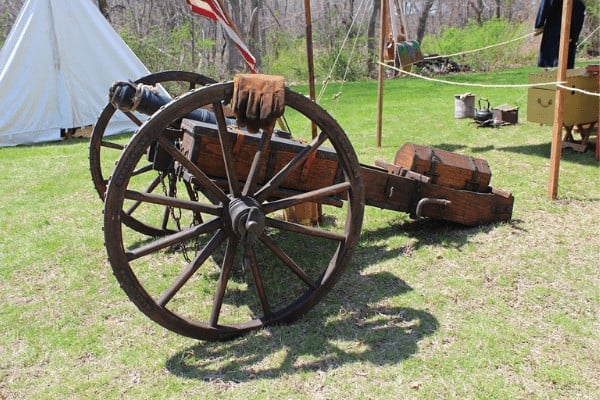
Some of the photos that are available in the SAR archive document the weapons and tools that soldiers used.
Searching for Sons of The American Revolution Records
The best place to find Sons of the American Revolution records is through the SAR. It has a genealogical search that allows you to view all the ancestors you have who participated in the war effort in some way. You also have the option of asking for records relating to specific members. The DAR has similar records available that focus on both men and women. You might find females in your family who served as nurses to wounded soldiers or allowed soldiers to stay in their homes. If you do not want to join one of these organizations or need to do more research before you join, you may want to search genealogical sites first.

Revolutionary War reenactors often use records to make accurate costumes.
How Does Sons of The American Revolution Records Search Work?
Doing a search of SAR records is no different from looking through county clerk records or arrest records. You need to have your membership number handy because the website will ask for it once you submit a request. The SAR also requires the name of the person/ancestor you want to search and for a card number to pay your fees. Most of the records dating back to the Revolutionary War charge a fee to access, even if you go through a different website or resource. Ancestry and genealogical sites often have similar records but charge higher fees. Those fees allow you to do as many searches as you want and access other records for one price.
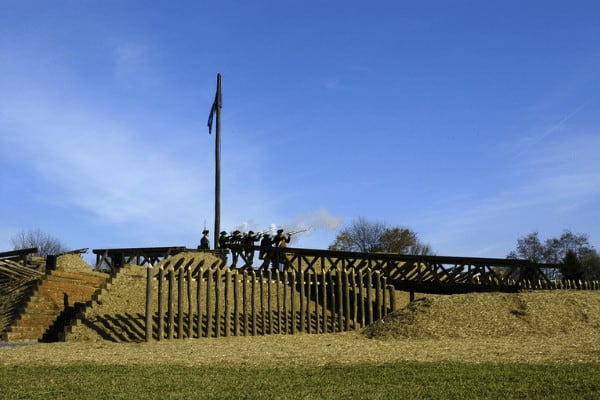
As Pennsylvania was home to several major battles, it's not surprising that the SAR local chapter has so many records.
Where to Look for Online Resources
In addition to the official SAR website, you can look for online resources that include:
- Genealogical websites: Genealogical records are often a good source of information for those looking for Revolutionary War records. Some allow you to view SAR membership applications from the early days of the organization up through 1970, which removes many of those who are still alive. You can also use those sites to view the military records that the United States government compiled.
- DAR: As the sister organization to SAR, DAR has many similar records. You’ll find lineage books that it compiled in past years that show the names of all members and their lineage records. DAR maintains a Patriot Index that it updates regularly. This index includes both DAR records and documents sourced from others.
- Society of Cincinnati: Founded by those who served in the Continental Army, the Society of Cincinnati has records that date back to the late 18th century. You can view the names of every person who joined the organization, including those who joined chapters in other cities as well as France. The Daughters of Cincinnati has similar records available such as an ancestor index search and a search function that helps you see if you qualify for membership.
- Veterans’ groups: Many veterans’ groups and organizations have records that members and their families can search through too. You usually need to prove that you have an ancestor who fought in a war or served in a branch of the military to access those records.

You can use your computer to both search and pay for the records that you need.
Start Your Research Today
Historians refer to the American Revolutionary War as the War of Independence because it helped the country separate from the British. Ir ran from 1775 to 1783 and saw more than 25,000 people die, including an estimated 6,800 who died on the battlefield. As the United States was in the midst of a great struggle, it’s not surprising that there aren’t many public records available today from that era. As you can’t talk to those who served as you can with World War II veterans, finding genealogical records is difficult. That is why many turn to the Sons of the American Revolution for help.
The SAR is the largest nonprofit organization in the world open to the descendants of anyone connected to the war. Not only can you join after tracing your familial line to show that an ancestor served in the Continental Navy or a state militia, but you can become a member if someone in your family aided in the war efforts. SAR has detailed records and an extensive archive that includes correspondence and documents as well as photos and videos. If you want to find out more about your family during the early days of the nation, Sons of the American Revolution records are the best place to start.
Quickly and Easily Search Almost Anyone's:

Disclaimer: We rank sites based on our knowledge and experience. Our team visits each site and evaluates each one before placing it online. Though we do accept referrals, we guarantee that the information we share is accurate and that we will only pass on information that we think is helpful to our visitors. The referral fees that we receive go to paying our team and keeping our website operational.
OurPublicRecord.Org is a privately owned and operated website and is NOT affiliated with the US Government or any law enforcement agency.